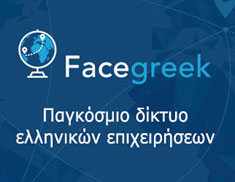The Museum of Prehistoric Thera in Fira is one of the most important museums in Greece. It houses findings from:
- the excavations of the Archaeological Society at Akrotiri
- older excavations of the German Archaeological Institute
- the excavations of the Ephorate of Antiquities in various positions
This exhibition shows the development of Thira in prehistoric times. Due to its rapid progress, the island became one of the most important Aegean centers in the 18th and 17th century BC. In essence, the museum is an extension of the archaeological site of Akrotiri, since it houses frescoes and findings of this urban center. It also hosts findings from many other places of Thira from the 5th millennium BC (Newer Neolithic Period) to the 17th century BC.
The Building
The idea for the construction of the museum belongs to Professor Spyridon Marinatos. The land where the museum is currently built was a donation of Evangelos Nomikos and the designs were made by architect John Koumanoudis. The construction of the museum began in the early 1970s and was completed in the early 1980s. In August 1999 the organization of the exhibition began and it was ready 8 months later. The second floor was revamped to meet the needs of a modern museum. The permanent exhibition is housed on the second floor of the building (600 m²) while the first floor houses workshops and temporary exhibitions.
Permanent Exhibitions
Thira from the Neolithic Age to its destruction by the earthquake: In the showcases of Hall C you can see findings (Neolithic pottery, Early Cycladic figurines and vases, Cycladic pottery etc.) and learn more about the island from the Neolithic Period (4500 BC) until the beginning of the Late Cycladic period (17th century BC).
The discovery of an archaeological site. In the lobby (A) of the Museum you can see photos and texts which explain the study of prehistoric Thira. You will also see a detailed report of the excavations which took place on the island (Thirassia, Akrotiri and elsewhere) in the late 19th century.
The geology of Thira. The small exhibition in Hall B follows the geological development of Thira and its intense volcanic activity, which started about 1.5 million years ago.
The town of Akrotiri. Sections of the exhibition:
- An urban center
- A developing bureaucracy
- Murals
- Pottery
- Theran angiography - Theran frescoes
- Jewelry
- A cosmopolitan port of the Bronze Age
Inside ancient homes and public places of Akrotiri many objects were discovered and are currently exhibited in Hall D1: household items, copper utensils, tools and weapons, items used in machining, baskets etc.
The murals
The murals that you can see in Hall D3 are among the most impressive exhibits found in private and public buildings of Akrotiri. Some of the most famous frescoes include:
- woman with papyrus
- swallows in the Spring
- an African man
- monkeys
- a bird
- floral motifs
Jewelry, pottery, stone utensils
Some jewelry was found in Akrotiri but the collection is not very big as the inhabitants took along their valuables before leaving the city. In Hall D6 you can see beads and pins made of semiprecious stones, bone and copper.
In Hall D7 you can see exhibits which highlight the cosmopolitan character of Akrotiri and its relations with other parts of the Aegean and Eastern Mediterranean. The exhibits include pottery from various regions of the Aegean, stone items from Crete and the Eastern Mediterranean and exotic murals.
Open Hours
- 09:00-16:00, daily except Monday



